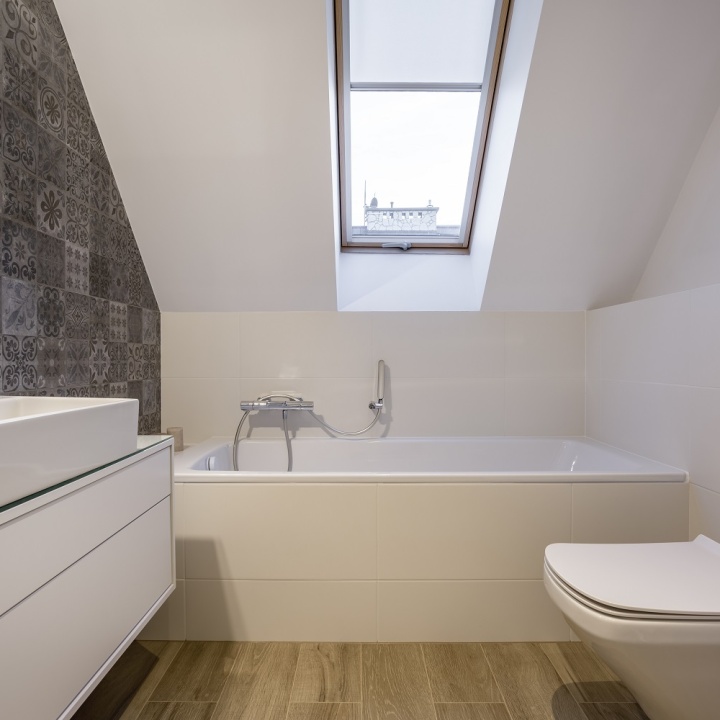A loft bathroom is a popular DIY project for people who’ve got the space to do it.
After all, as well as utilising space that’s otherwise largely unused, a bathroom loft conversion expands your home and increases resale price of the property. What’s not to love?
If you're one of many readers who’ve never taken on a DIY project before, though, a bathroom loft conversion can be a very daunting prospect. How do you know whether the space is suitable? How do you go about plumbing it in and hooking it up to the electrics? And what type of bathroom fittings should you choose for a small attic bathroom?
In this post, we'll answer your questions. After reading you'll understand more about a bathroom loft conversion and whether it’s the right choice for you, as well as being inspired by a few loft bathroom ideas.
Here's what we'll cover:
- Can you convert a loft into a bathroom?
- Why go for a loft bathroom?
- What to consider when converting your loft into a bathroom
- How to convert your loft into a bathroom
- Design ideas for small loft bathrooms
- Design ideas for an en suite to a loft bedroom
Can You Convert A Loft Into A Bathroom?
There are three ways to answer this question:
- Is it possible to convert a loft into a bathroom?
- Is it legal to convert a loft into a bathroom?
- Can you personally convert a loft into the bathroom?
For the first, the answer is yes: modern homes and many older homes are built in such a way that a loft conversion is possible.
When it comes to legality, it’s something of a grey area. An article from Checkatrade summarises the situation: loft conversions must adhere to all building regulations, and planning permission must be sought where relevant.
To determine whether planning permission is relevant, the Planning Portal explains that loft conversions are considered permitted developments (i.e., ones which don't require permission) as long as certain criteria are met. These include, but are not limited to the building not containing flats, not having previously been non-residential, and so on.
Getting caught after converting a loft without permission can lead to you having to restore the property to its previous state at your cost, and a potentially unlimited fine being issued if you’re prosecuted. So it’s definitely worth being absolutely sure before you start.
Should You Convert A Loft Into A Bathroom Yourself?
When it comes to actually doing the work for a loft conversion, the answer varies depending on your experience. This is a big, complex job. And while it can be tempting to give it a go - especially when the alternative is paying a lot of money to professionals to do it for you - discovering halfway through that you lack the required skills can put you in a position that’s expensive to recover from.
To find out what a loft conversion entails click here.
Why Go For A Loft Bathroom?
There are many reasons to go for a loft bathroom.
- It opens up more space in your home without having to move: turning a 2-bedroom home into a 3-bed is great if you're looking to start a family, or if you want a self-contained suite for guests to stay in.
- It increases your property resale price: as well as being convenient for you when you live there, having an attic bedroom or bathroom will be a boon to your property price when it's time to sell.
- It takes the pressure off of a single bathroom: sharing one bathroom in a family home can cause problems (for instance, if someone enjoys leisurely showers). Having a second bathroom immediately alleviates such problems.
- It might encourage you to declutter: for many of us, lofts are places where junk goes to gather dust between house moves. The top layer of things might see occasional use, but the majority stays untouched for years at a time. Converting your loft into residential space is a great prompt to get rid of accumulated rubbish.
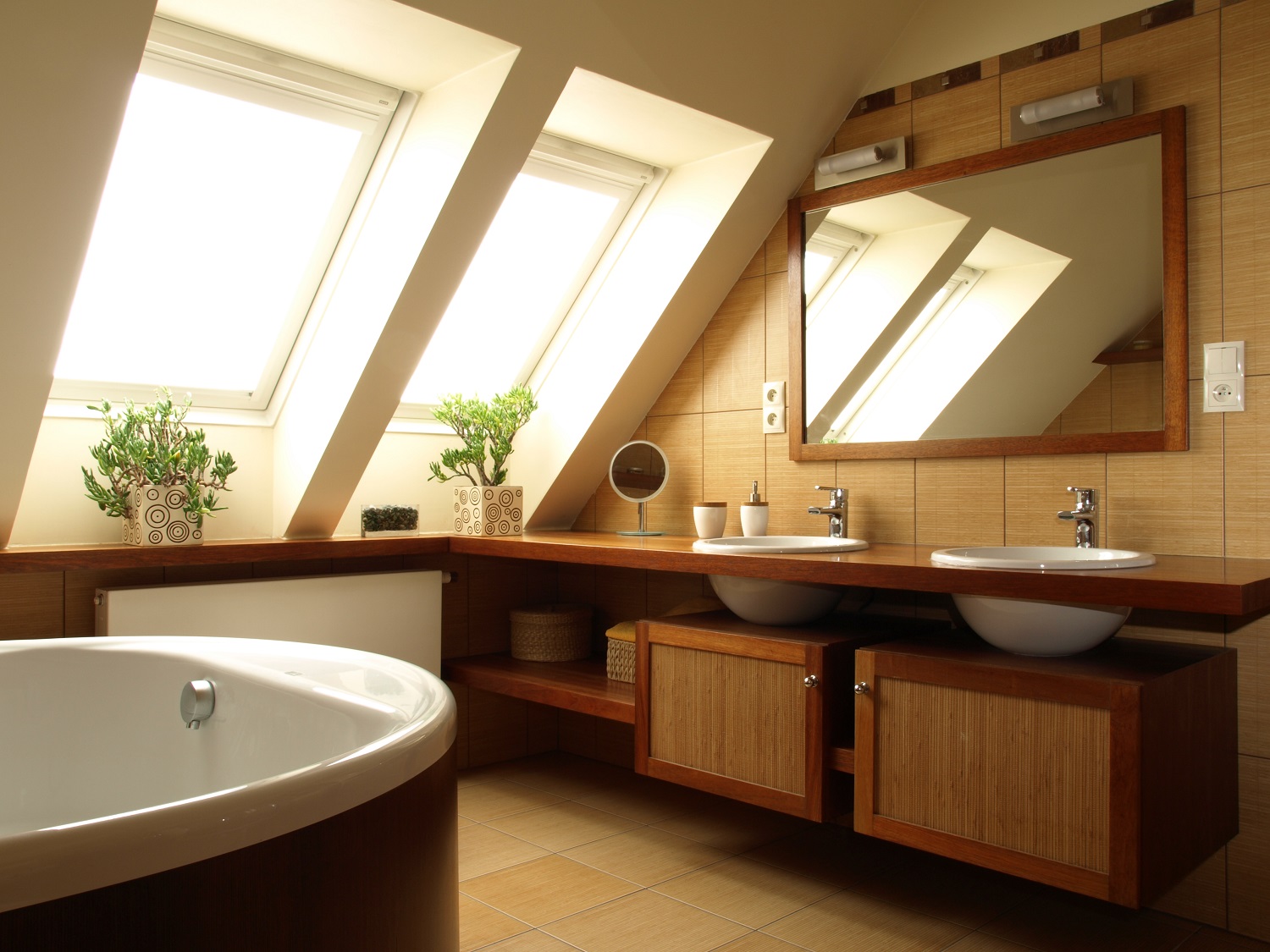
Converting Your Loft Into A Bathroom
When you’ve decided to convert your loft to a bathroom, the real work begins. This is a big job with a lot of steps, and each one needs to be done to a high standard to ensure a space that is attractive, functional and, most importantly, safe.
What You Need to Consider With A Loft Conversion
Here are some of the things you need to keep in mind when converting a loft. Please note, this list is not exhaustive: this is an informative blog post, and not a guide on how to convert your loft.
Plumbing
To put a bathroom in your loft you’ll need to run water and waste pipes up from elsewhere in your house. This includes pipes to bring in hot and cold water, a foul water pipe to remove waste water, and a soil pipe to remove toilet waste.
Water Pressure
Because it’s at the top of your house, water pressure is often a problem in lofts. This can be alleviated by installing a pump to generate water pressure: you’ll need to know before plumbing things in whether a pump is required, and which one if so.
Heating
Lofts can be notoriously chilly if not correctly insulated. When converting a loft you need to make sure the space retains enough warmth to be comfortably usable. The central heating system can be expanded to reach your loft, and insulation can be added to stud walls to keep the warmth in.
Electronics
As well as hooking up water pipes you’ll need to run electricity into your loft bathroom for lights, wall sockets, showers and anything else that needs it. This job expands the skill set you need to tackle a loft conversion: it’s not just building and plumbing, but electrical training.
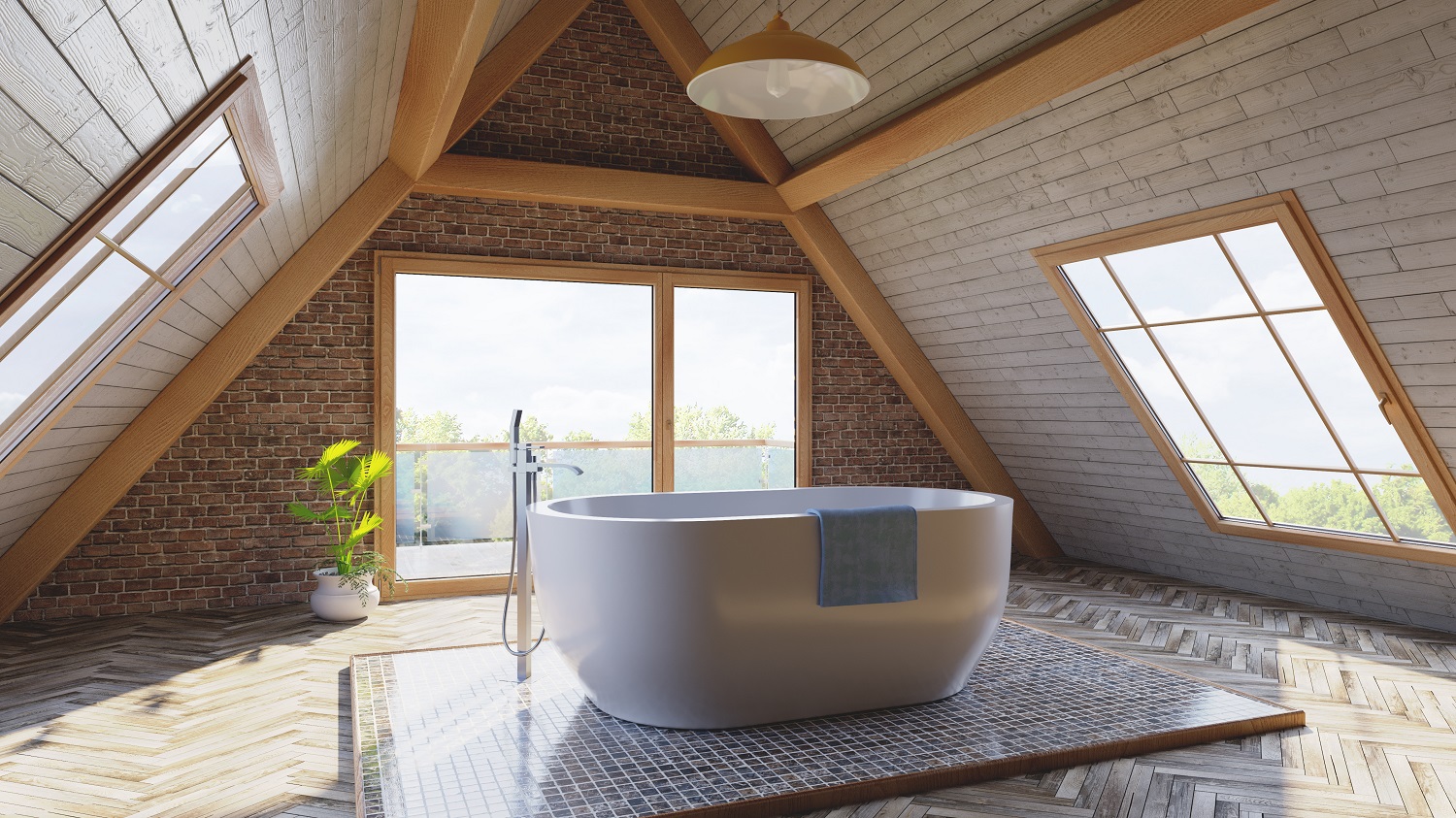
Natural Light
As well as electric light you’ll most likely want to install a window or skylight in your loft bathroom, to give as much natural light as possible. Houses with sloped roofs open up some interesting options for loft windows: you can have them angled in such a way that neighbours may not be able to see in.
Humidity
If moist air is unable to escape your loft bathroom this can quickly lead to issues, making an extractor fan a crucial component.
How to Convert Your Loft Into A Bathroom
Whether you’re considering doing the job yourself or hiring someone else to do it, it’s helpful to have an idea of what the process will look like. The steps below give an outline of how a bathroom loft conversion might progress.
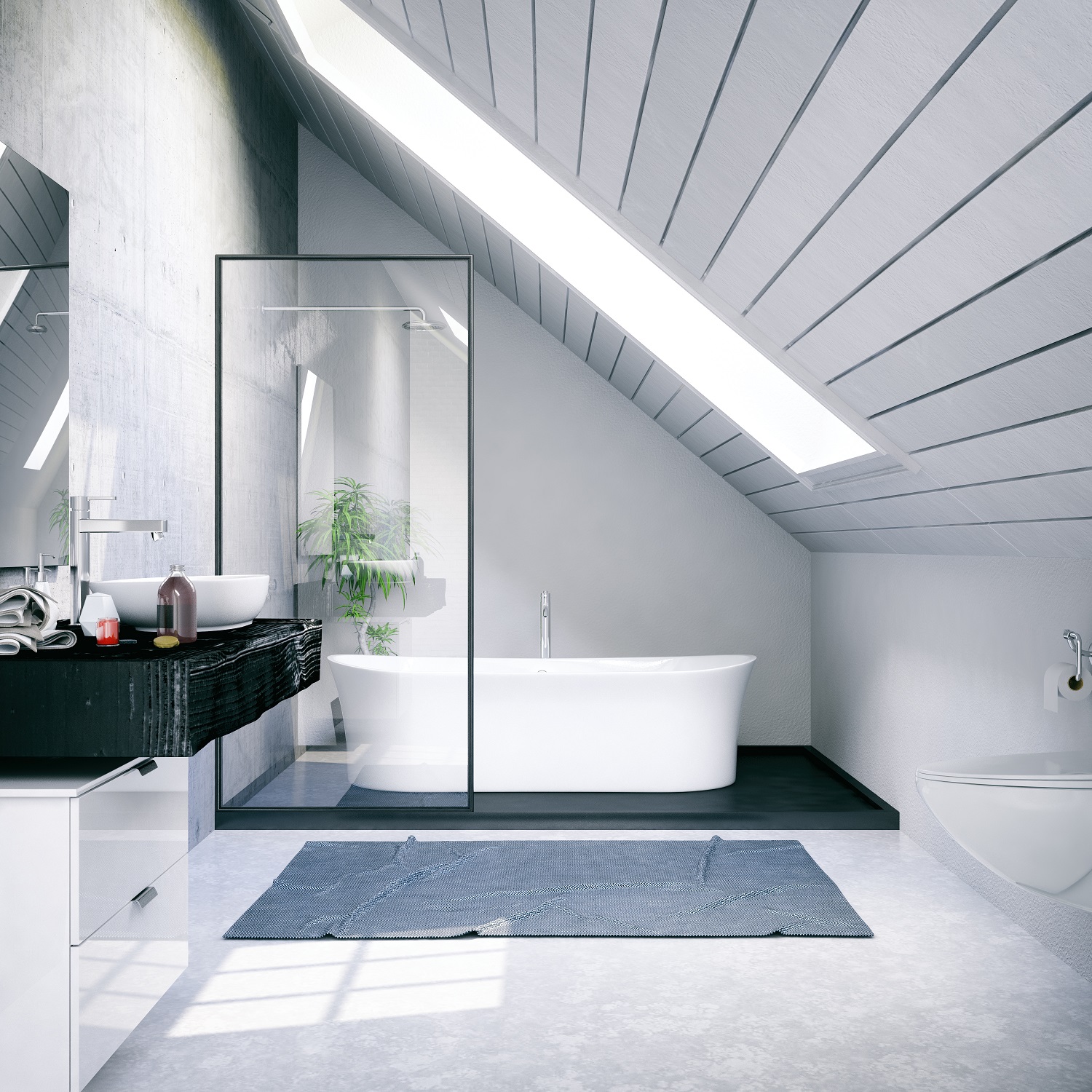
Again, this information is only indicative and shouldn’t be read as a step by step guide.
- Fix the space with timber studs
- Run plumbing pipes and electrical wires
- Fit the soil pipe
- Add insulation between timber studs
- Get approval by building control
- Cover with the insulated studs with plasterboard
- Install windows
- Fix your shower tray (if having a shower)
- Board out walls with moisture board
- Install other fixtures
- Put up tiles
- Add trim and other fine detailing
Loft Bathroom Design Ideas
When considering a loft bathroom conversion it’s a good idea to get some inspiration from how others have done it. These attic bathroom ideas give you a feel for what’s possible, and let you see how your space might look before committing to any purchases.
Small Loft Bathrooms
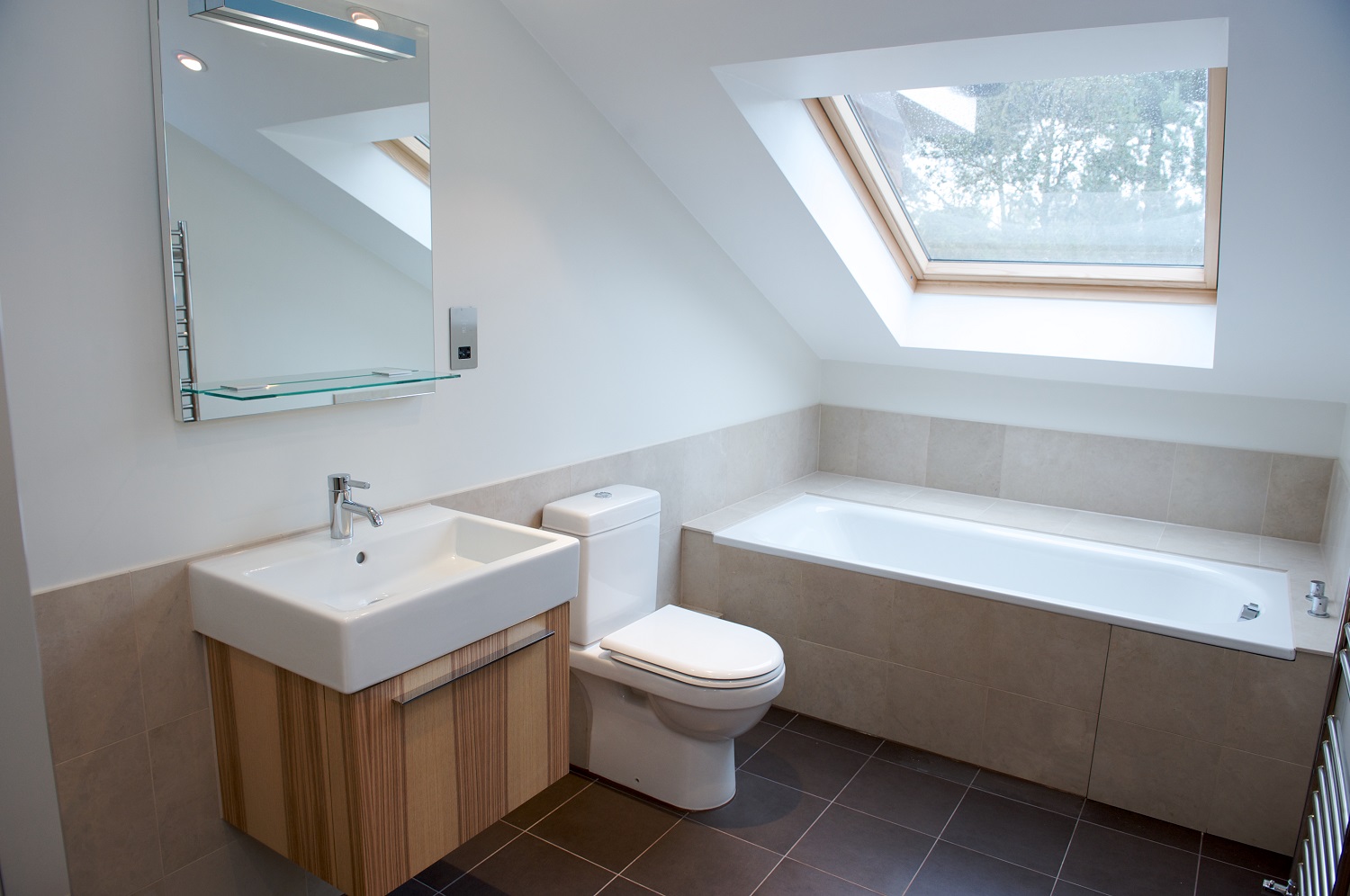
In most cases, loft bathrooms are smaller than regular bathrooms due to inherent space limitations. Designing an effective loft bathroom becomes an exercise in making space saving choices.
In this bathroom you’ll see a compact bath and a short projection toilet: both designed to offer the functionality you’d expect in a smaller space. Wall hung short projection toilets offer an even smaller profile.
While a small pedestal basin is used in the bathroom above, cloakroom vanity units are a very popular choice for loft bathrooms as they offer a decent amount of storage - great for keeping your small space free of clutter.
Using a towel radiator in place of a traditional radiator is another way to increase storage capacity: instead of one towel draped over the top, you can store two or three here.
A wall to wall shower enclosure is a great choice for an attic bathroom as it makes full use of an awkwardly shaped space, as you can see with the shower nestled into the eaves above.
You’ll also notice that bright colours and natural light make the space feel bigger than it is. Combining this with mirrors is a reliable way to make a snug lof bathroom feel a bit more spacious.
Loft Bedroom and Bathroom
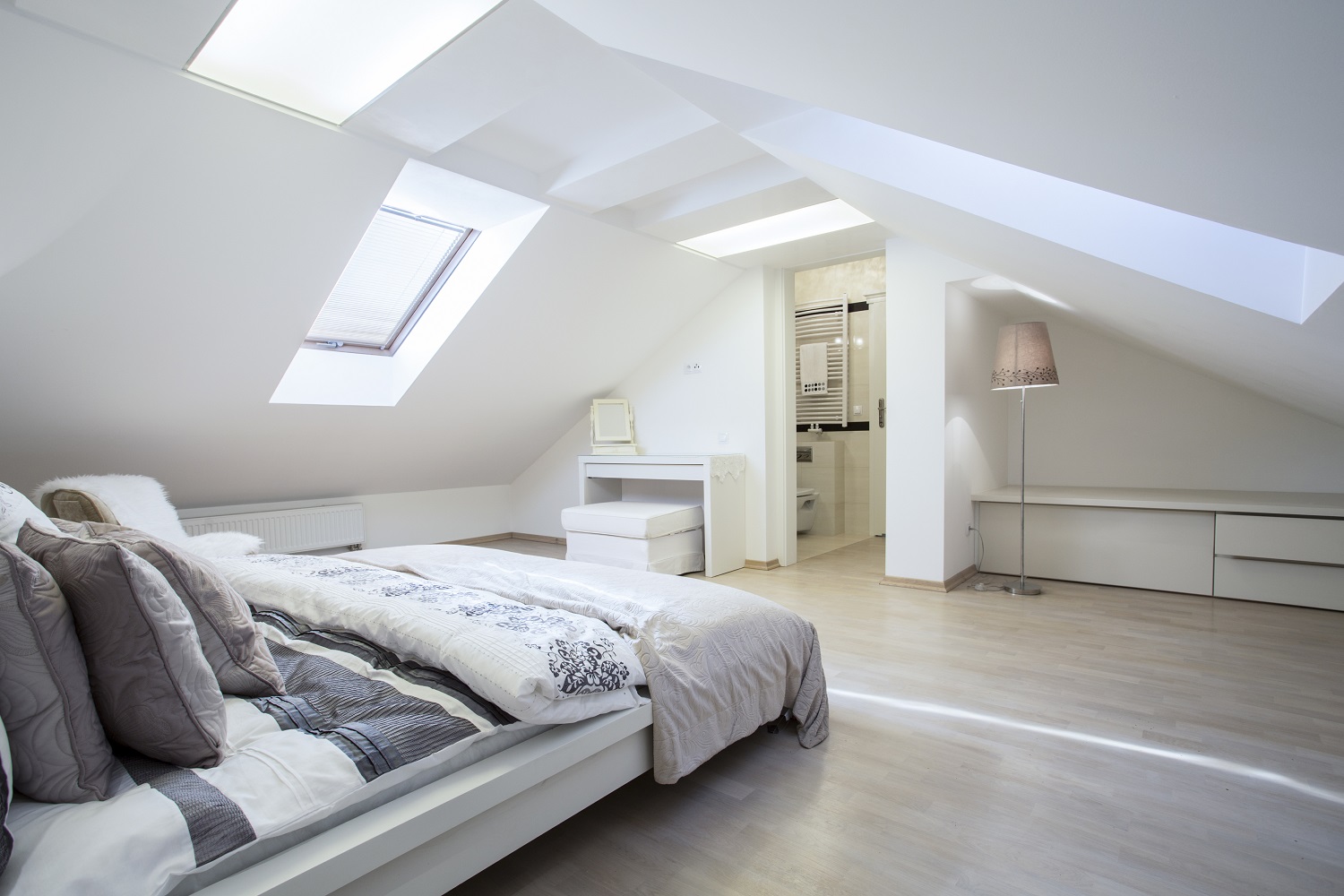
Loft conversions featuring a bedroom with an en suite offer their own considerations. Here you want to ensure privacy while making it easy to move between the two rooms.
Sliding doors are a nifty way to separate loft bedrooms from their en suites. Instead of a door with a large profile, you simply slide a door on rails or into an alcove. This makes the most of the space in both rooms.
Attic Bathrooms with Sloped Ceilings
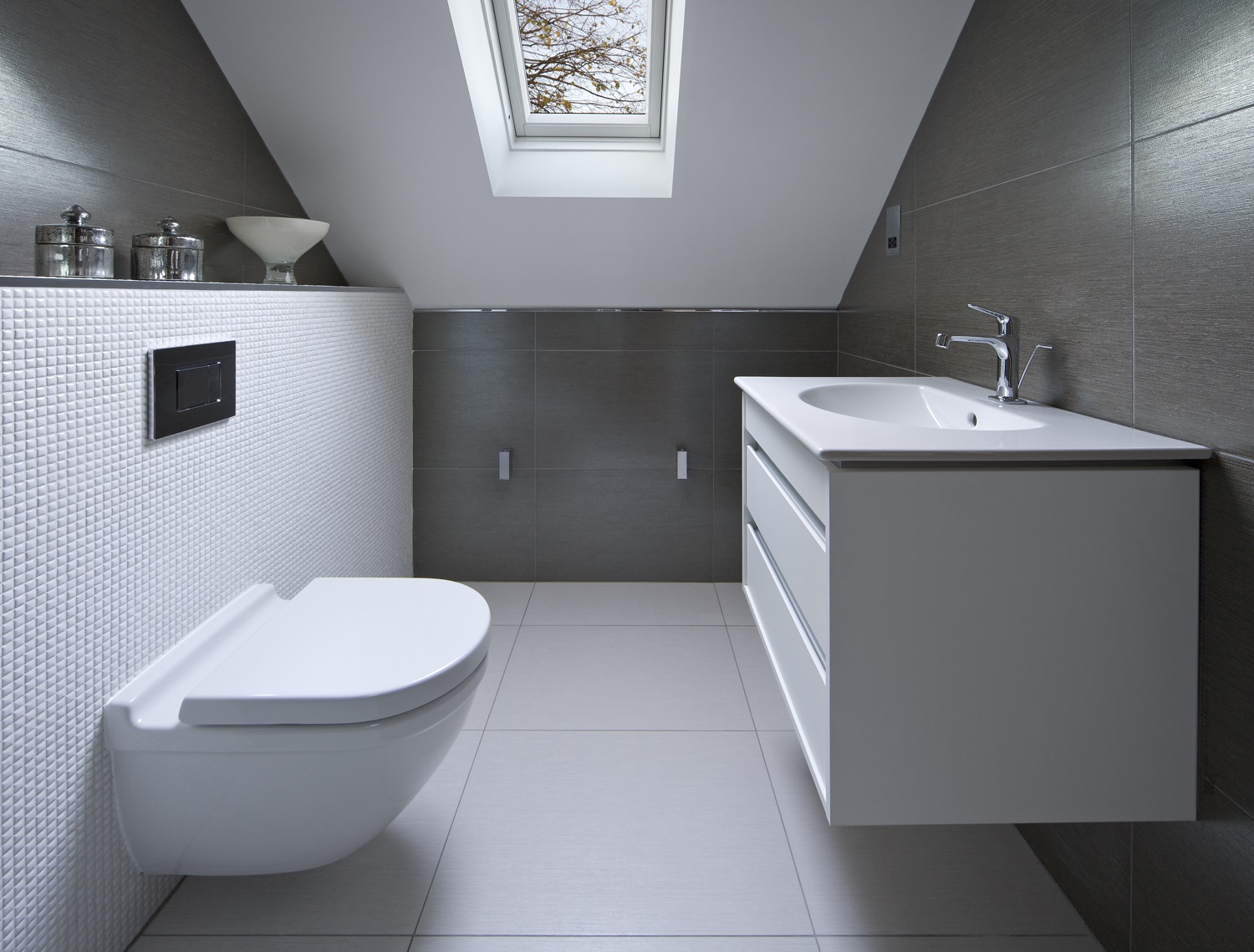
A sloped ceiling is an unavoidable aspect of most loft bathrooms, due to the nature of the space. Factoring the slope into the design gives you the chance to make decisions that work with the space, rather than being hindered by it.
The first step is accepting there will be some space you can't use. As seen in the image above, though, the majority of this space can be kept behind walls: so you’ll need to decide whether to cover up this dead space or to embrace it.
Running a counter beneath the slope gives you some storage space, and you can tuck your toilet under the eaves slightly as long as you leave enough space to stand up.
Even with a slope, large sections of your loft bathroom will have a comfortable height. Putting your shower in the highest part of the room is the best option, as it ensures you’ll be able to stand comfortably when showering.
You can also add shelving in the sloped section next to the shower for easy access to towels, toiletries and other bathroom must-haves.
Putting a bath beneath the slope is a good option too. As long as you’re careful when getting in and out, the low height won’t have any negative impact on your comfort while bathing.
Design Advice for Loft Bathroom Conversions
Converting your loft into a bathroom is a fantastic way to open up more space in your home, and to add to its resale value. Whether you decide to do the conversion yourself or pay professionals to do it, a bathroom in your attic is something you can enjoy for years to come.
Working with a small space doesn’t need to limit your loft bathroom design choices, either. Nowadays there are plenty of smart space-saving bathroom fixtures to choose from, including short projection wall hung toilets, compact baths and cloakroom vanity units, to name but a few.
To find out how a loft bathroom conversion could look in your home, why not book a 3D Bathroom Design Service appointment today or get in touch with one of our experts? We’ll be happy to help you discover how to get the most out of your space, and to create the loft bathroom of your dreams.
